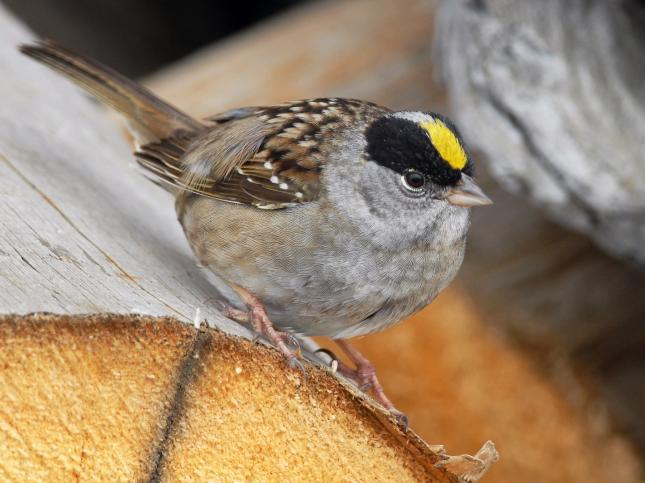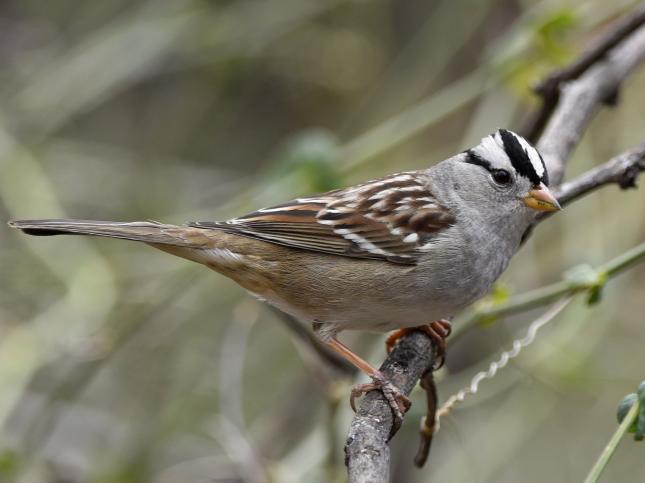images courtesy of ebird
Golden-crowned and White-crowned Sparrow
The Golden-crowned Sparrow is a large, handsome sparrow that is common in weedy or shrubby lowlands and city edges in the winter along the Pacific coast. During the winter time, it spends time in brush, riparian thickets, chaparral and gardens. They eat many kinds of seeds, some fruit like apples and grapes and insects such as ants, wasps, bees, moths, butterflies, beetles, crane flies and termites. They often flock with other members of their own species and hop on the ground gleaning food in fields, orchards, lawns and gardens.
The nest is a thick cup of twigs, dry bark, moss, ferns and grasses. It is lined with fine grasses, ptarmigan feathers, and hair from moose, deer or caribou. The female collects the nest material while the male follows her around and sings.
The Golden-crowned Sparrow is one of the least known of our songbirds, especially regarding its northern breeding grounds.
This sparrow arrives earlier and stays longer on its California wintering grounds than almost any other bird species.
When day length increases in the spring, the Golden-crowned Sparrow detects the change through light-sensitive cells in its body. Its body responds by putting on fat and getting an urge to migrate.
Miners in the Yukon at the turn of the century referred to this sparrow as the "no gold here" bird because its song resembled that phrase. They also thought it sounded like it was saying, "I'm so tired" prompting them to dub the bird "Weary Willie".
The oldest Golden-crowned Sparrow on record was at least 10 years, 6 months old.
White-crowned Sparrows appear each winter over much of North America. The handsome black- and- white head, pale beak and gray breast combine for a striking look and make it one of the surest sparrow identifications on the continent. Look for them in thickets, weedy fields, agricultural fields, roadsides and backyards.
White-crowned Sparrows eat seeds and insects, grains such as oats, wheat, barley and corn, and fruit including elderberries and blackberries.
The nest is built out of twigs, grasses, pine needles, moss, bark and dead leaves. It is lined with fine grasses and hair and is usually placed fairly low in a shrub.
Young male White-crowned Sparrows learn the basics of the song it will sing as an adult during the first two or three months of their lives. They don't learn directly from their fathers but from the song environment of its natal neighborhood. Because of this, and because they don't travel far from where they were raised, song dialects frequently form. Males on the edge of two dialects may be bilingual and able to sing both dialects.
White-crowned Sparrows will share their territories with Fox Sparrows but will chase Chipping Sparrows and Dark-eyed Juncos until they leave.
Male White-crowned Sparrows do most of the singing but sometimes females sing. They usually sing while contesting breeding territories or a winter food source. The female's song is quieter and more variable than the male's.
Scientists studying movement and energy found that a White-crowned Sparrow can run on a tread mill at a pace of about 1/3 of a mile an hour without tiring out.
The oldest recorded White-crowned Sparrow was 13 years, 4 months old.
All information courtesy of the Cornell Lab of Ornithology



